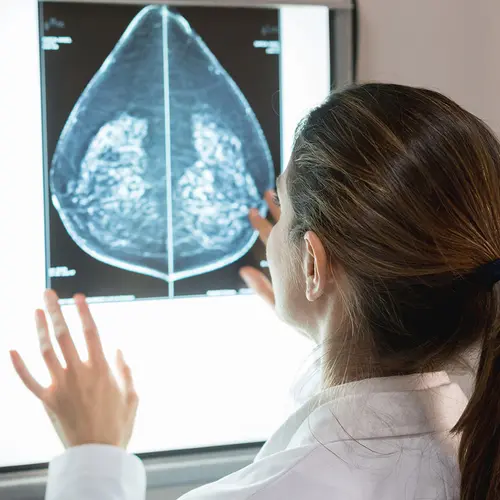After Susan Berger was diagnosed with breast cancer in 1997, she underwent a lumpectomy, chemotherapy, radiation, and took tamoxifen for 10 years. In 2009, she tested negative for the well-known BRCA gene mutations, which are linked to an increased risk of breast cancer, so she thought she was in the clear. It wasn't until her daughter tested positive for the lesser-known PALB2 gene mutation that she learned she was still at risk.
Berger, who achieved her dream of becoming a journalist during the midst of her cancer treatment, was shocked to learn about the PALB2 gene mutation. As a 24-year breast cancer survivor and health reporter for 10 years, she couldn't believe she hadn't heard of the gene, which was discovered in 2014.
Women who have a PALB2 mutation have a 40 to 60 percent increased risk of developing breast cancer, as well as increased risk of developing ovarian and pancreatic cancer. The PALB2 gene ordinarily works with the BRCA2 gene to repair damaged DNA and stop the growth of tumors. Researchers say the risk of developing breast cancer if you have the PALB2 gene mutation is consequently high, even if you don't have a BRCA1 or BRCA2 gene mutation.
When Berger learned about the PALB2 gene mutation, she immediately had genetic testing done to assess her risk. Her test results showed she, too, had the mutation. As a journalist, her first instinct was to write a story about PALB2 and its association with breast cancer. In the course of her research she discovered that doctors recommend women with the PALB2 mutation be closely monitored for breast cancer. They also recommend women who had genetic testing for the BRCA gene mutations before 2014 be retested.
Once she learned this, she consulted with her oncologist and genetic counselor to discuss her risk of developing recurrent breast cancer. They both told her she was at an increased risk for developing estrogen-negative breast cancer, which is more difficult to treat. Instead of waiting to see if she developed cancer, Berger decided to go ahead and have a double mastectomy and have her ovaries and fallopian tubes removed. She hopes that by reporting about the PALB2 gene mutation, she can help spread awareness.

